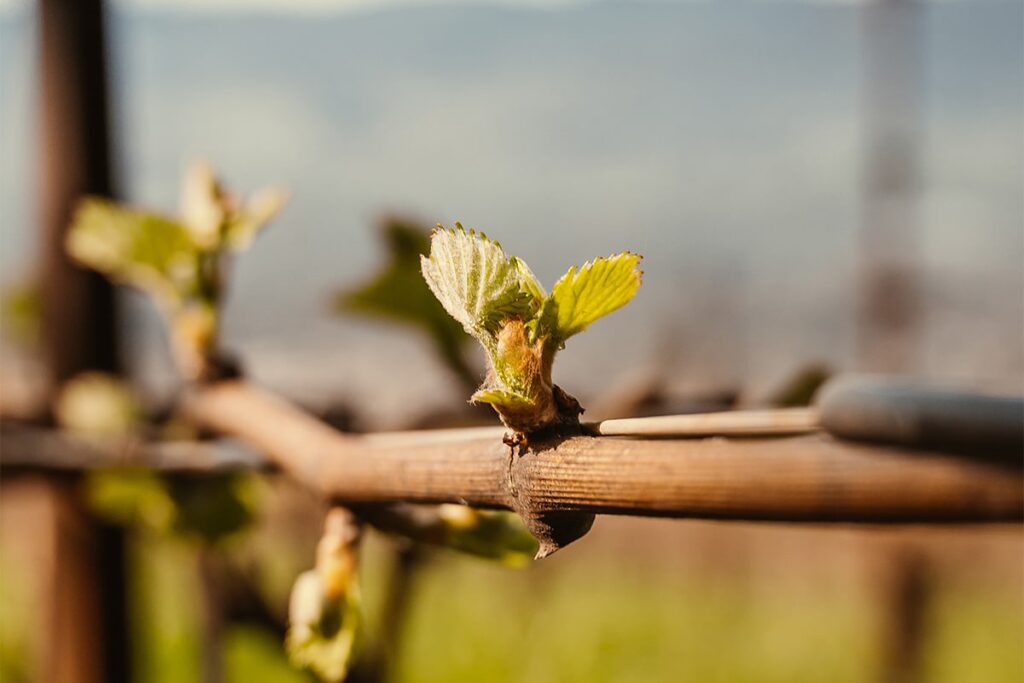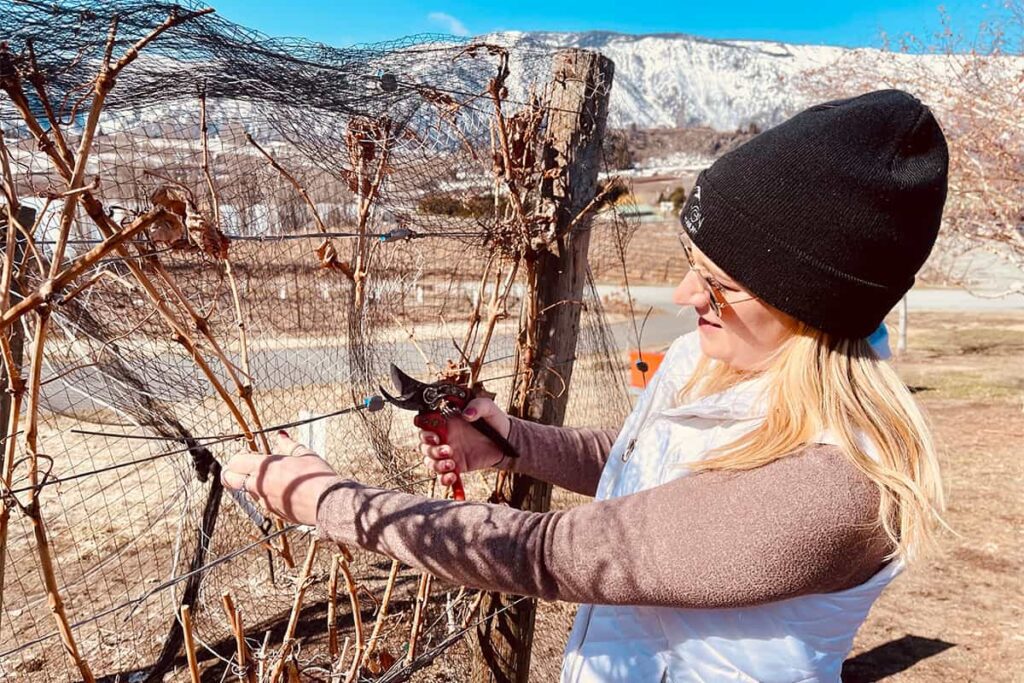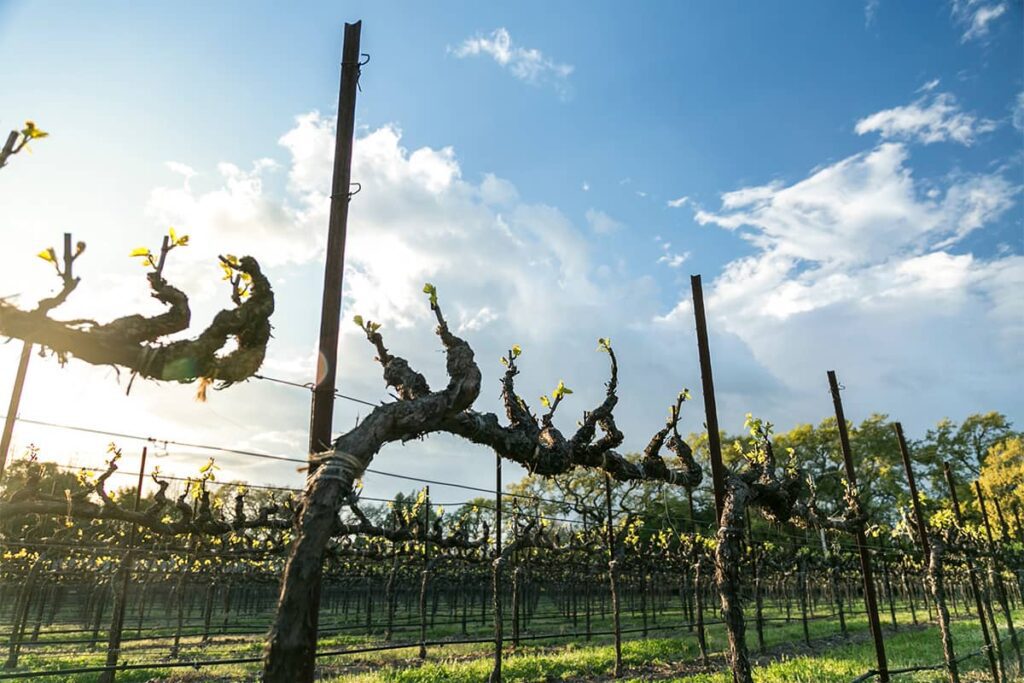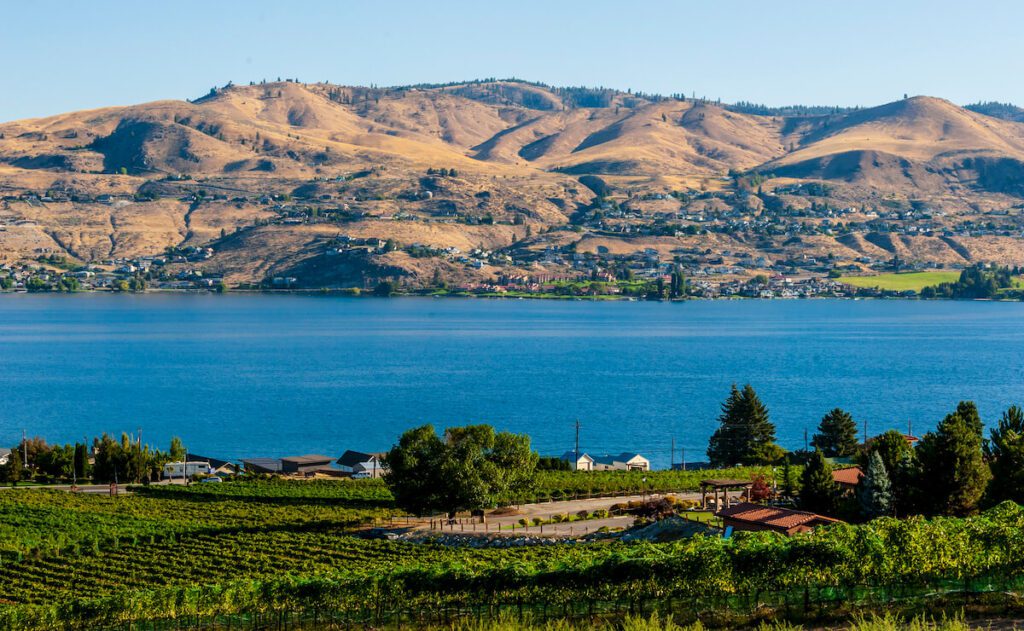Spring Awakening: How to Identify Bud Break in the Vineyards
Early spring signals an exciting pivot point for the vineyards. After months of winter dormancy, the vines awaken and the first signs of life emerge: bud break.
You’ll likely hear the term “bud break” sprinkled around during a spring visit to the Lake Chelan Wine Valley. But what exactly is bud break and why is it important?
Let’s find out.
What is Bud Break?

Bud break (also known as bud burst) is identifiable by the growth of new shoots and visible green tips on the grape vines. It’s especially exciting because it is the very first glimpse of what will eventually become a cluster of grapes, and then of course, the fermented juice we all know and love as wine.
You can easily identify bud break by the pops of green leaves throughout the vineyard. Just like a flower, the buds burst to life with a little bit of sun and heat exposure.
Pruning for Success

The late winter and early spring season is an important time for pruning the vineyards. This is when it’s safest to cut the vines while they are still dormant and risk of infection is low.
Pruning throughout the dormant season and into early spring is a critical step to ensuring the health and crop load of the grapevines. Winery owners and vineyard workers toil through the coldest temperatures of the season to prune back the vines so that the energy from the root system is directed to the limbs in a very specific way.
By methodically pruning the grapevines, vineyard workers control the vines’ overall health and crop load for the growing season. The buds returned after pruning burst at bud break and eventually form the leaves, shoots, and fruit harvested in late fall. These are then pressed into the juicy and mineral-dense wines that the Lake Chelan AVA is touted for.
When Does Bud Break Occur?

The timeline for bud break is dependent on geography and environmental factors, with most bud break happening around early April in the Northern Hemisphere. As a general rule, a consistent average daily temperature of around 50 degrees Fahrenheit is necessary before the soil will warm enough for the vines to wake up.
Additionally, certain varietals may exhibit bud break earlier than others. For example, it’s typical to see bud break in Chardonnay grapes before Cabernet Sauvignon grapes. Overall, timing of bud break hinges on a few key factors including the varietal’s genetic makeup, average daytime temperature, and vineyard elevation.
Due to the Lake Chelan AVA’s geographical location, bud break typically occurs around late April. Despite an early and prolonged winter, it appears to be an average spring in the Lake Chelan Valley and the vines are projected to follow a normal trajectory for the 2023 growing season.
What Triggers Bud Break?

At a scientific level, bud break is the product of the complex internal systems of the vines. As the soil beneath gradually warms and the snow melts, the vines take in the moisture from the ground and push nutrients stored through dormancy up through their roots, slowly transferring them to the grapevines.
These fluids eventually reach the freshly-pruned vines in the form of sap. At this point, the vines begin to bleed or weep, the natural phenomenon that produces bud break. As soon as the buds burst, the process of photosynthesis kicks in and the shoots and leaves multiply.
Bud break is an exciting time in the Lake Chelan Wine Valley — a symbol of longer and warmer days ahead, and with them the promise of a prosperous growing season.












